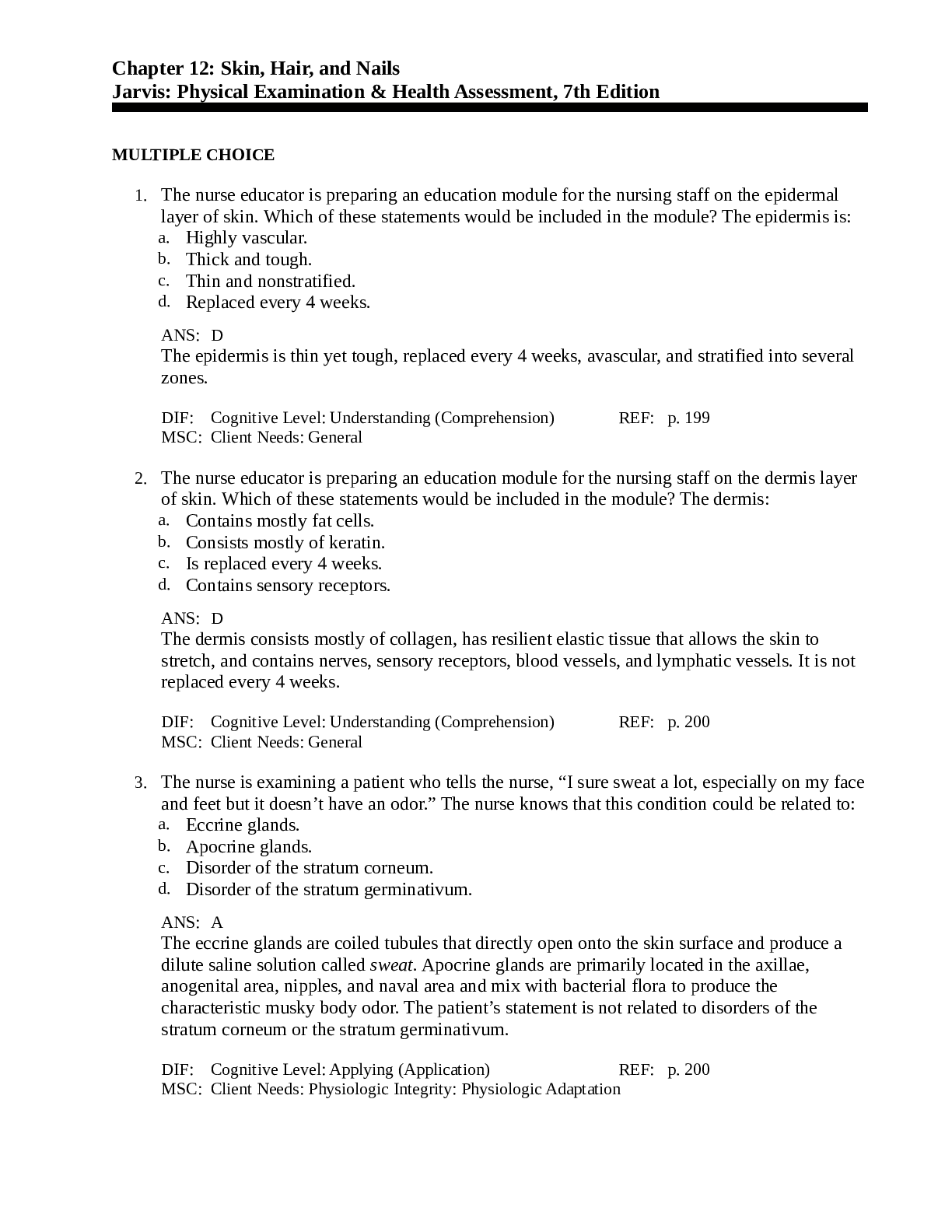c12: Skin, Hair, and Nails Jarvis: Physical Examination , Health Assessment and solutions
Course
Project Management
Subject
Chemistry
Category
Questions and Answers
Pages
16
Uploaded By
ATIPROS
Preview 4 out of 16 Pages


Download all 16 pages for $ 8.84
Reviews (0)
$8.84
